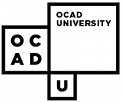 Index
Index
This list is for reference purposes only and does not reflect endorsement by the IDRC.
Description
Animated signing characters are a technology for displaying signed communication without the necessity of displaying a digitized video of a human signer. Instead, the systems use 3D animated figure, which can be stored more efficiently than video. The characters can produce movement of the fingers, hands, facial gestures, body movements, and co-signs, in which two different words or ideas are signed at the same time. The characters can be programmed to communicate in either a sign language (e.g. ASL) or a signed communication systems (e.g. Exact Signed English). Advances in graphics capabilities mean that personal computers are able to produce this animation with much great clarity than in the past, when transitions between the signs were rough and the hands had to return to a central position between each sign.
Points to Ponder - Questions to consider when shopping for Animated Signing Characters
- Is your material suited to a personal or an impersonal medium? (Human signers are usually best suited to communicating personally, while animated characters may be best suited to communicating impersonally)
- Are there storage and/or bandwidth limitations for your material? (When Animated Signing Characters are encoded by markup, they use less storage and bandwidth than digitized videos of human signers)
- Will your material be periodically updated? (Animated signing character systems may be easier to update than video material that must be re-shot with a human signer)
- Will the appeal of an animated character add to the effectiveness of your material? (e.g. Children may find the animation appealing)
Windows Solutions
- Sign Smith by VCom3D
- An educational software program for signers focused on English literacy, reading comprehension, and vocabulary.
- Is used to add sign language to curriculum materials.
- Vcommunicator® Authoring Suite by VCom3D
- Allows customers to develop 3D characters and animations.
- Files are exportable to a variety of applications across multiple platforms including mobile devices.
- Signing Science by TERC
- A set of online educational materials for elementary and intermediate school science classes.
- Much of the material is presented by both text and an animated signing character.
- Requires a plug-in from VCom3D.




